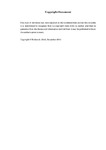Algebraic Codes For Error Correction In Digital Communication Systems
| dc.contributor.supervisor | Ahmed, Dr.M.Z | |
| dc.contributor.author | Jibril, Mubarak | |
| dc.contributor.other | School of Engineering, Computing and Mathematics | en_US |
| dc.date.accessioned | 2012-09-07T13:38:42Z | |
| dc.date.accessioned | 2011-12-16T15:09:03Z | |
| dc.date.available | 2012-09-07T13:38:42Z | |
| dc.date.available | 2011-12-16T15:09:03Z | |
| dc.date.issued | 2011 | |
| dc.date.issued | 2011 | |
| dc.identifier | 10113913 | |
| dc.identifier | Not available | en_US |
| dc.identifier.uri | http://hdl.handle.net/10026.1/1188 | |
| dc.description | Access to the full-text thesis is no longer available at the author's request, due to 3rd party copyright restrictions. Access removed on 29.11.2016 by CS (TIS). | |
| dc.description | Metadata merged with duplicate record (http://hdl.handle.net/10026.1/899) on 20.12.2016 by CS (TIS). | |
| dc.description.abstract |
C. Shannon presented theoretical conditions under which communication was possible error-free in the presence of noise. Subsequently the notion of using error correcting codes to mitigate the effects of noise in digital transmission was introduced by R. Hamming. Algebraic codes, codes described using powerful tools from algebra took to the fore early on in the search for good error correcting codes. Many classes of algebraic codes now exist and are known to have the best properties of any known classes of codes. An error correcting code can be described by three of its most important properties length, dimension and minimum distance. Given codes with the same length and dimension, one with the largest minimum distance will provide better error correction. As a result the research focuses on finding improved codes with better minimum distances than any known codes. Algebraic geometry codes are obtained from curves. They are a culmination of years of research into algebraic codes and generalise most known algebraic codes. Additionally they have exceptional distance properties as their lengths become arbitrarily large. Algebraic geometry codes are studied in great detail with special attention given to their construction and decoding. The practical performance of these codes is evaluated and compared with previously known codes in different communication channels. Furthermore many new codes that have better minimum distance to the best known codes with the same length and dimension are presented from a generalised construction of algebraic geometry codes. Goppa codes are also an important class of algebraic codes. A construction of binary extended Goppa codes is generalised to codes with nonbinary alphabets and as a result many new codes are found. This construction is shown as an efficient way to extend another well known class of algebraic codes, BCH codes. A generic method of shortening codes whilst increasing the minimum distance is generalised. An analysis of this method reveals a close relationship with methods of extending codes. Some new codes from Goppa codes are found by exploiting this relationship. Finally an extension method for BCH codes is presented and this method is shown be as good as a well known method of extension in certain cases. | en_US |
| dc.language.iso | en | en_US |
| dc.publisher | University of Plymouth | en_US |
| dc.subject | Error Correction | |
| dc.subject | Algebraic Codes | |
| dc.subject | Code Construction | |
| dc.subject | Digital Communication | |
| dc.subject | Coding Theory | |
| dc.title | Algebraic Codes For Error Correction In Digital Communication Systems | en_US |
| dc.type | Thesis | |
| plymouth.version | Full version | en_US |
| dc.identifier.doi | http://dx.doi.org/10.24382/3548 |
Files in this item
This item appears in the following Collection(s)
-
01 Research Theses Main Collection
Research Theses Main



